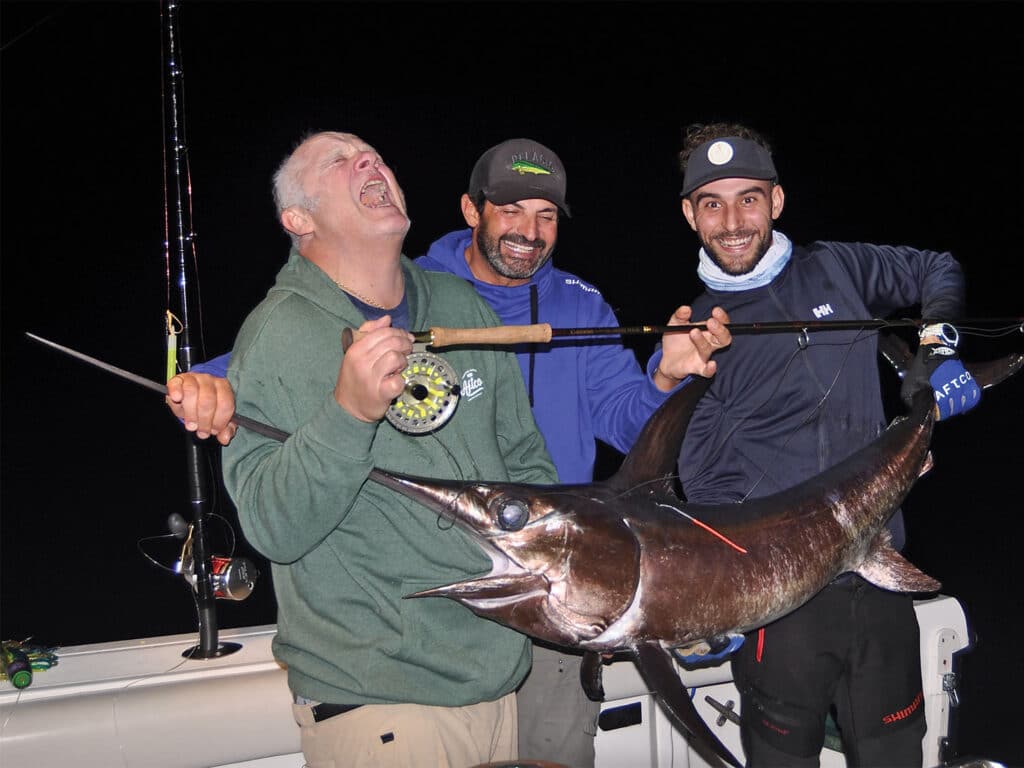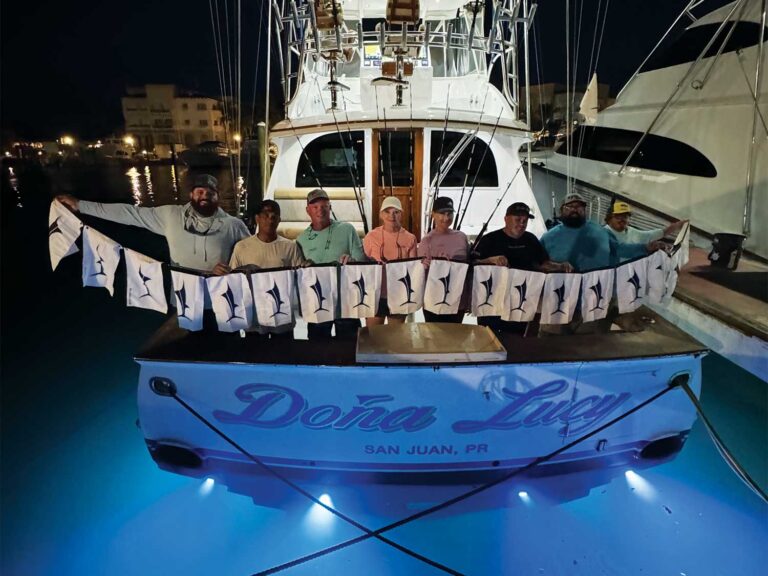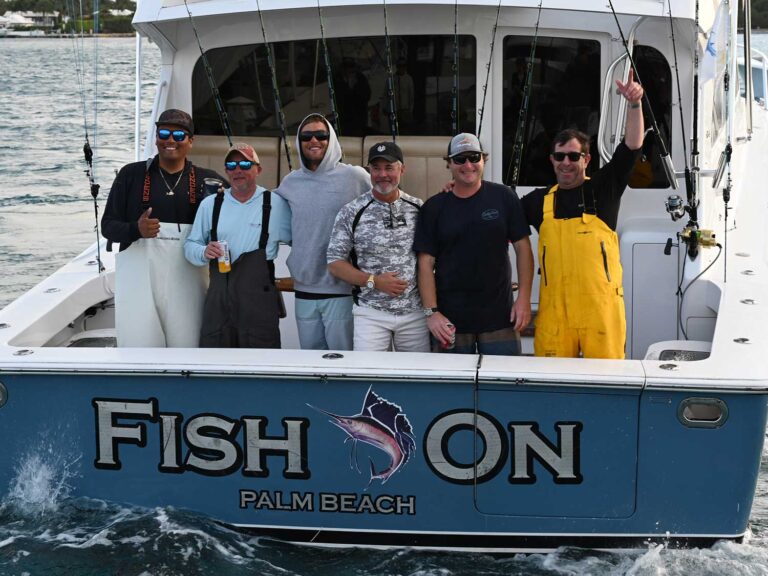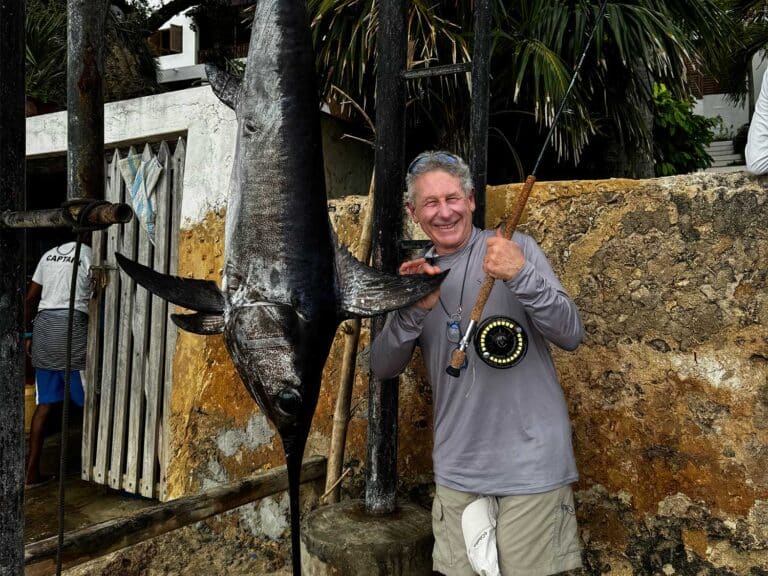
Special delivery: Sign up for the free Marlin email newsletter. Subscribe to Marlin magazine and get a year of highly collectible, keepsake editions – plus access to the digital edition and archives.
Marina Alcudia basked beneath a sky of unbroken blue, a result of the high-pressure system that had established itself over the island of Majorca in the Mediterranean Sea. Yet, aside from an occasional boat owner carrying out routine maintenance, the place was deserted. Aside from a handful of local cafes and eateries, most of the island was in the depths of hibernation.
And neither did I have any intention of visiting so early in the season until I received a phone call from Capt. Vince Riera, saying, “Drop whatever you are doing and get on a flight out here now.” A few days later I arrived at Palma. This was the opportunity we had been waiting for ever since we had first kicked around the idea of trying to catch a swordfish on fly several years ago.
As the 49-foot Tiara Mad Max headed toward a tight cluster of waypoints on the chart plotter, each marking the exact location of a previous capture, the sun eased its way down toward the horizon. I selected a squid fly that at least appeared close to the real thing, which I tied to a premade IGFA-legal 10 kg leader. Riera and his crew prepared the hookless teasers, skipjack tuna bellies rigged with rubber squid skirts. These were deployed just ahead of a chemical light stick, which—in addition to an extra level of attraction—would provide me with an accurate indication of the position of the bait and consequently a fish when, or if, I got a chance to cast. One teaser was deployed off a planer, working at about 30 to 45 feet beneath the surface, while a second skipped on the surface through our wake.
Just as the sun disappeared beneath the horizon, the glowing orb of a full moon ascended into the sky in the east. Certainly they would never fish at night during a full moon for swordfish. But Riera’s reply made sense: “There are a lot of sharks in other parts of the world, and moonlight greatly assists them in hunting near the surface, so the swords only feed high up in the water column on the blackest of nights. The Mediterranean is almost completely devoid of sharks, so swordfish can feed at the surface in safety, even on the brightest of moonlit nights.”
We had our first strike at around 7 p.m. The small bell clipped to the rod tip fishing the planer bait tinkled to life, and a quick glance confirmed something was hitting the bait. Oliver Kaufer, Riera’s crewman, grabbed the rod just as the line broke free from the planer, and shouted out in excitement that he could feel the bait being hit by what appeared to be a swordfish. I positioned myself in the port corner, ready to cast, watching as the glow of the light stick confirmed the fish was getting ever closer.
I had assumed that as in previous night trips I would not be able to see anything other than the light stick, but this was far from the case. The moon had bathed the surface of the ocean in silvery light, which allowed me to clearly see the incredible sight of the fish slashing and tearing at the teaser. Riera put the boat in neutral, and as the fish was teased into what I considered to be my casting range, I cast. The fly landed in the right zone a few feet away from the last point the teaser had been, before being pulled free from the water. I allowed the fly to sink for a second or two, then gave it a few short tugs before allowing it to sink further. Nothing happened, so I retrieved the fly with long, slow pulls, recast, and repeated the drill, full of anticipation, but again, nothing. We headed back a few hours later, disappointed.
For our second night, Riera, frustrated with the comparative lack of action the previous night, was determined to do something about it. We left the marina a couple of hours earlier, the game plan being to troll our way to an area he was confident would produce a lot more strikes. The journey passed without interruption, then once again, as the sun started to set, we prepared to fly-fish. It was still twilight when the first hookless teasers were deployed.
We had been trolling for barely ten minutes when the bell on the planer rod tinkled again. Kaufer grabbed the rod and started to draw the clearly enraged billfish toward us. Then I saw it: a sizable broken wake that appeared all the more impressive given the ultra-calm surface of the sea, which glowed brightly in the remaining ambient light.

Clearly this was another very aggressive fish, but would it switch from teaser to fly? Kaufer pulled the teaser from the water, and as Riera shifted the engines into neutral, I cast. The fly landed exactly where I had intended, about 6 feet to the right of where the wake from the fish was still clearly visible, and I watched in awe as that wake immediately altered course and swam directly toward the fly. Seconds later I felt a hard knock on the end of my line, and in my mind’s eye I saw the fish strike the fly with its bill. I allowed the fly to continue to sink while giving it just the slightest of tugs to retain the fish’s interest; then everything locked up solid.
And so began the most stressful hour I have ever endured with a fishing rod. I set the hook firmly with two or three tugs, and a moment later the fish was completely airborne barely twenty feet behind us. The image of that magnificent animal silhouetted against the still comparatively light western sky, its saber-like bill all but the length of its chunky body, is indelibly etched into my memory.
Following the jump, the fish set off on its first run, slowly at first, but gradually increasing in speed until my reel was screaming. At this stage there was nothing I could do other than hold on while trying to maintain as much smooth pressure as I could, terrified that the hook would fall out or the bill would cut the flimsy tippet. Eventually the angle of my line confirmed the fish was diving deep, so I settled in a position where I could maintain maximum pressure on the fish using the lower third of the rod. But for what seemed an age there was nothing I could do other than watch as even more backing disappeared out through the guides.
Read Next: The Mediterranean island of Majorca remains one of the world’s best-kept fishing secrets.
Eventually the fish did stop, and I started retrieving line, inch by inch, foot by foot. For maybe 40 minutes I went through a process during which I’d recover maybe 30 feet of line, only to have to relinquish it again when the fish bored back into deeper water.
After about an hour I had the fly line back on the reel, and from that moment things went quickly. By this stage I thought it was going to jump again, but no, when finally the fish broke the surface, it just swam very slowly, it’s high dorsal cutting the surface. Minutes later, Kaufer’s gloved hands reached out and grabbed its bill.
The fish was tagged and released, as is the law with all billfish caught in Spanish waters. Just how heavy that fish was we’ll never really know, but everyone on board agreed it weighed in the neighborhood of 50 to 60 pounds. As we posed for a couple of quick trophy shots, it felt every ounce of that.







